The Ultimate Guide to Hanoi Train Street (Schedule, Cafes)
8 min readAt first, you hear a distant “choo” and then a chorus of Vietnamese locals screaming, “GET BACK!” Welcome to Hanoi’s “Train Street,” where an old train thunders down railroad tracks,...
The post Hanoi Train Street: How to Visit + the Truth Behind Hanoi’s Most Alluring Attraction appeared first on Bucketlist Bri.
Disclosure: This post may contain affiliate links, which earn me a small commission from bookings at no extra cost to you. Thank you for reading and supporting my blog!
At first, you hear a distant “choo” and then a chorus of Vietnamese locals screaming, “GET BACK!”
Welcome to Hanoi’s “Train Street,” where an old train thunders down railroad tracks, rattling the cafes and shops—and onlookers—merely a foot away.
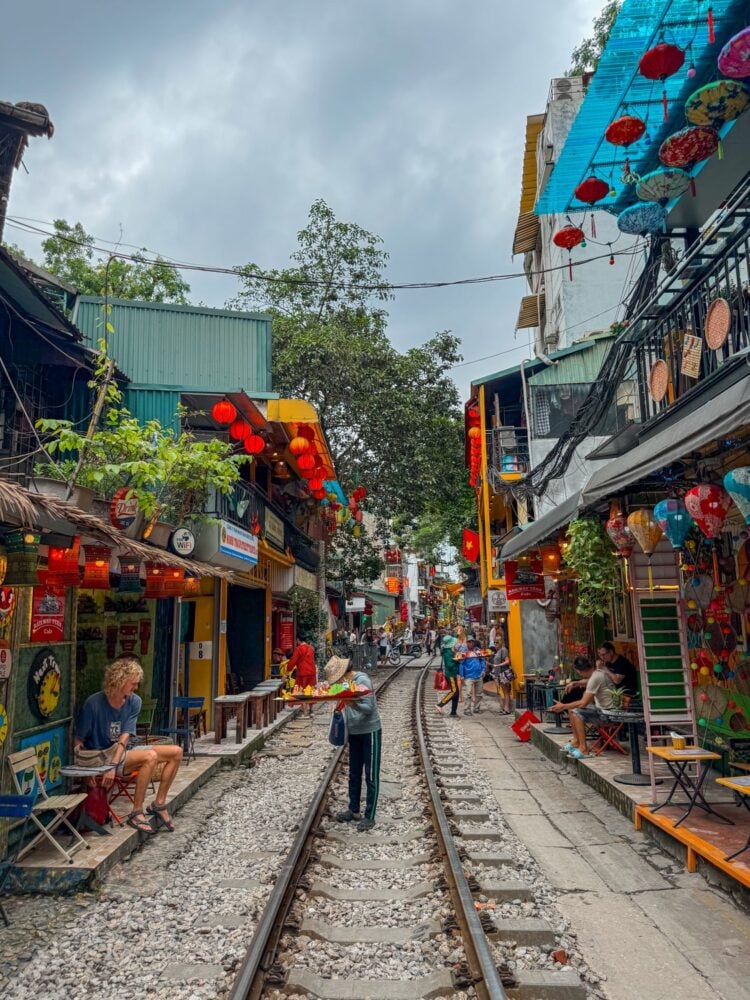
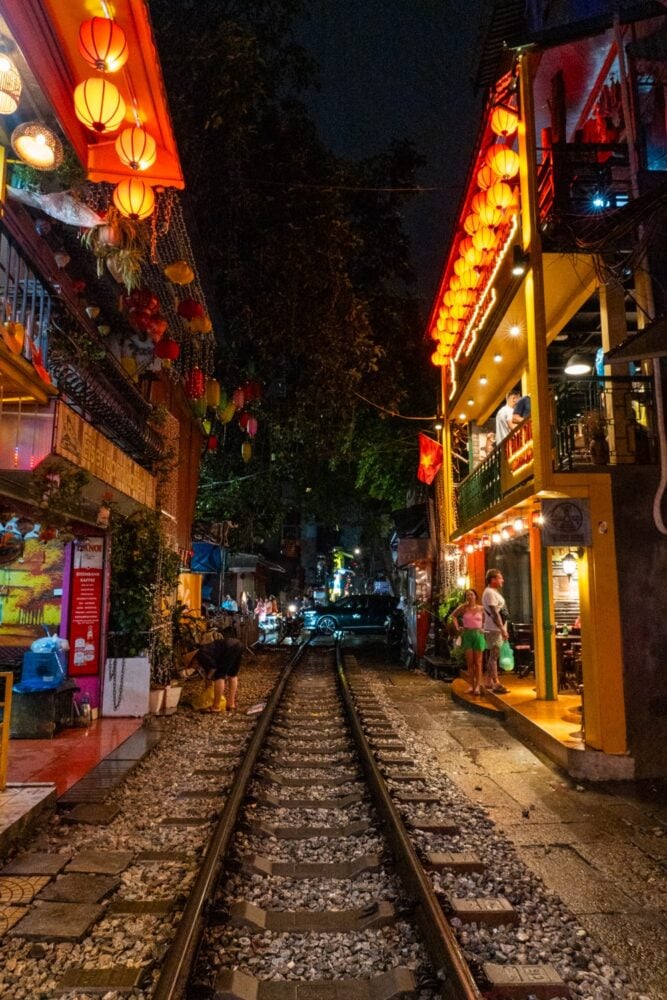
Once overlooked and considered an unsightly, noisy nuisance, Hanoi Train Street has become Vietnam’s capital’s most alluring tourist attraction.
It’s easy to see why, too—the scene is post-card worthy, a veritable photographer’s muse and previous underrated gem only known to locals and the intrepid.
But now, everyone with a phone flocks to this corner of the city for an experience that can’t quite be replicated elsewhere.
After visiting Hanoi’s train street multiple times (night and day), I picked up a tip or two that I wanted to share with you in this guide.
If you’re looking for Hanoi train times and the best cafes, read more below!
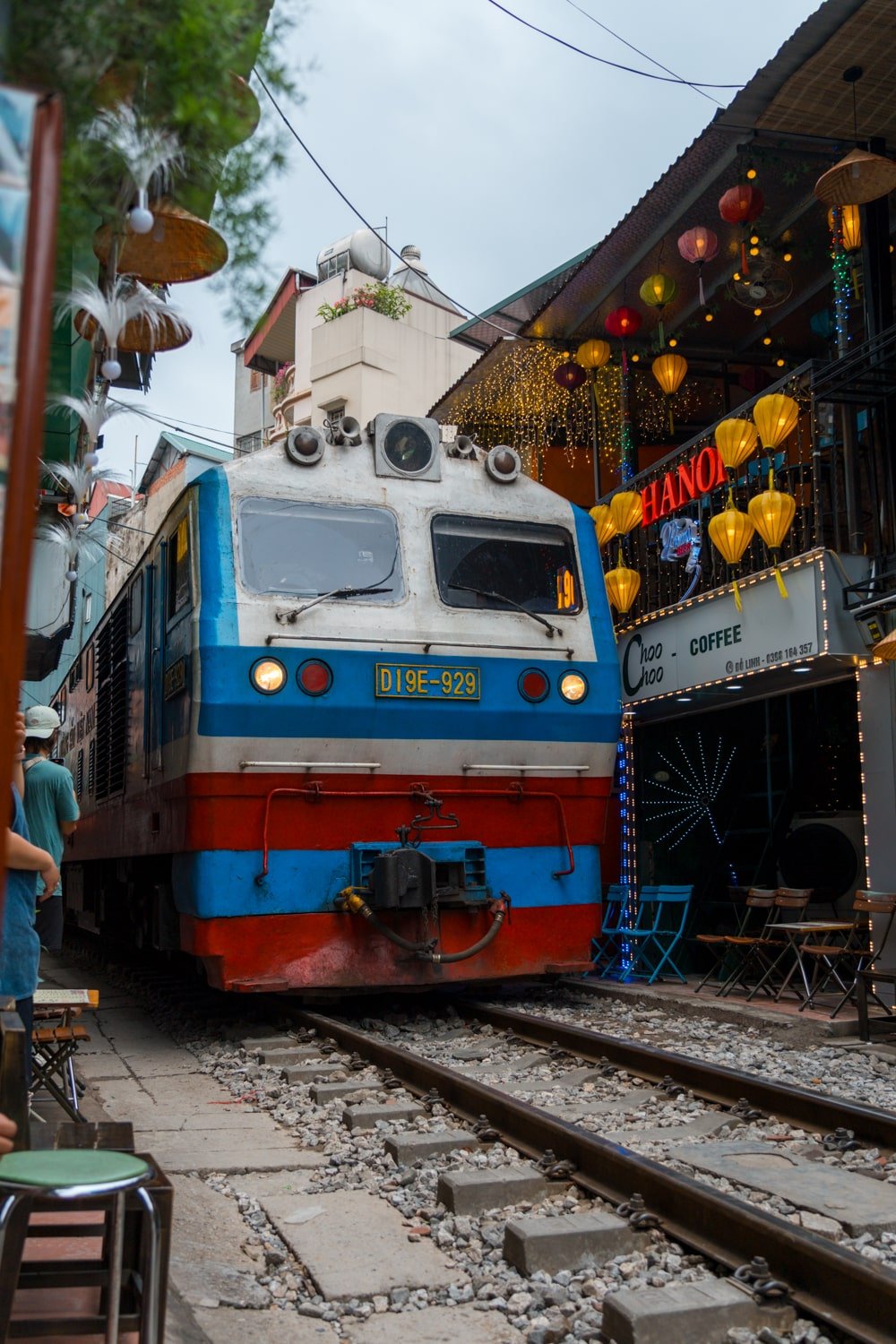
show
Everything You Need to Know About Hanoi’s Famous Train Street
What (& Where) Is the Train Street in Hanoi & Why Is It So Popular?
Although you’d quickly locate train street just by exploring Hanoi’s Old Quarter, you’ll precisely find this sought-after railroad track at the crossroads of Nam De and Tran Phu (right before and parallel to Phung Hung Street, here).
The train that passes on this lined railroad tracks operates like any other, so why did this spot become so famous? One word: Instagram.
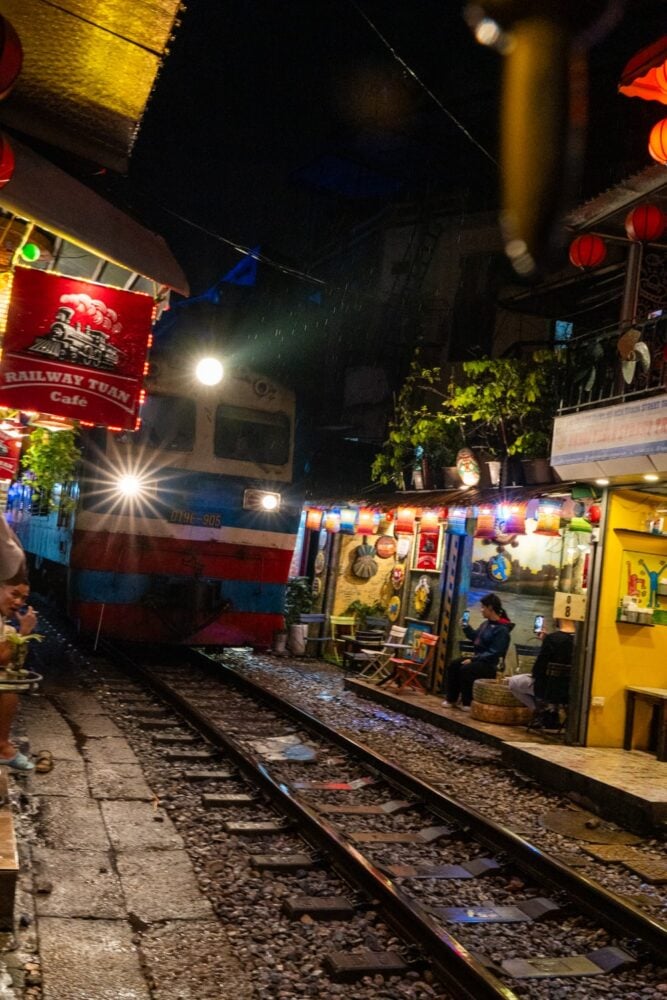
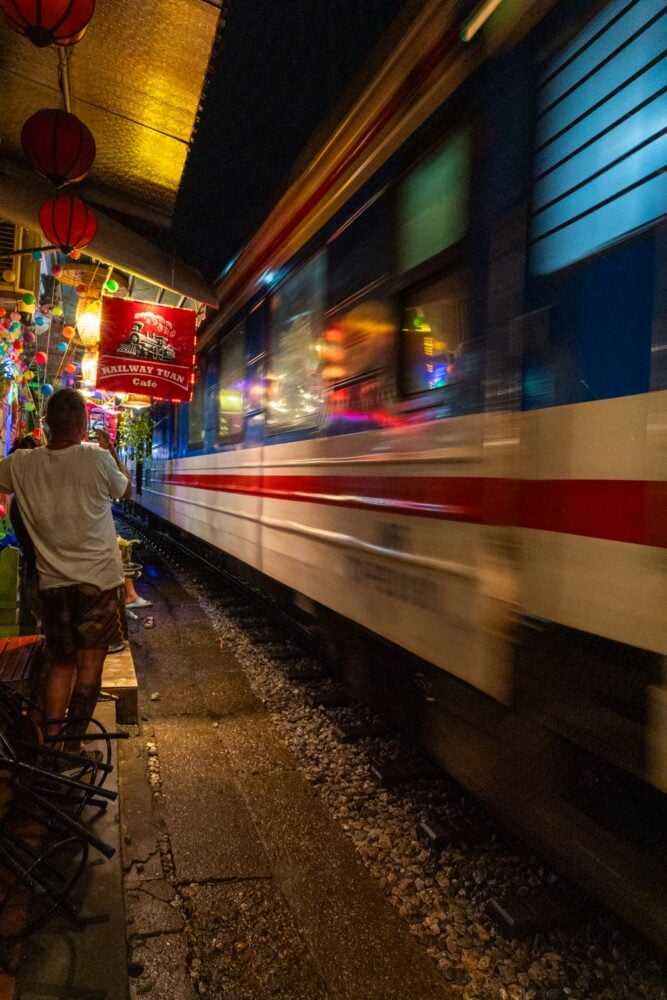
If you want to know how life on the train street changed for locals in 2019, read this thoughtful post by Fabienne, who lived in the community for two years.
“What used to be an old-style village street crossed by an awkward train, ignored by most, made its entry into the digital tourism era. That the change on Hanoi Train Street was drastically accelerated by social media is a clear fact, and it’s not the first time Instagram is pointed out for changing the way we travel. I witnessed it first-hand and it gave me vertigo.”
Fabienne Fong Yan, “Did Instagram Kill Hanoi Train Street?”
Train Schedule: What Time Does the Train Pass on Hanoi Train Street?
The train passes by multiple times daily but varies and isn’t always on time.
Even though I’ve suggested times below (based on a written schedule our cafe shop owner showed us), I suggest asking one of the locals in person for the day that you want to see it.
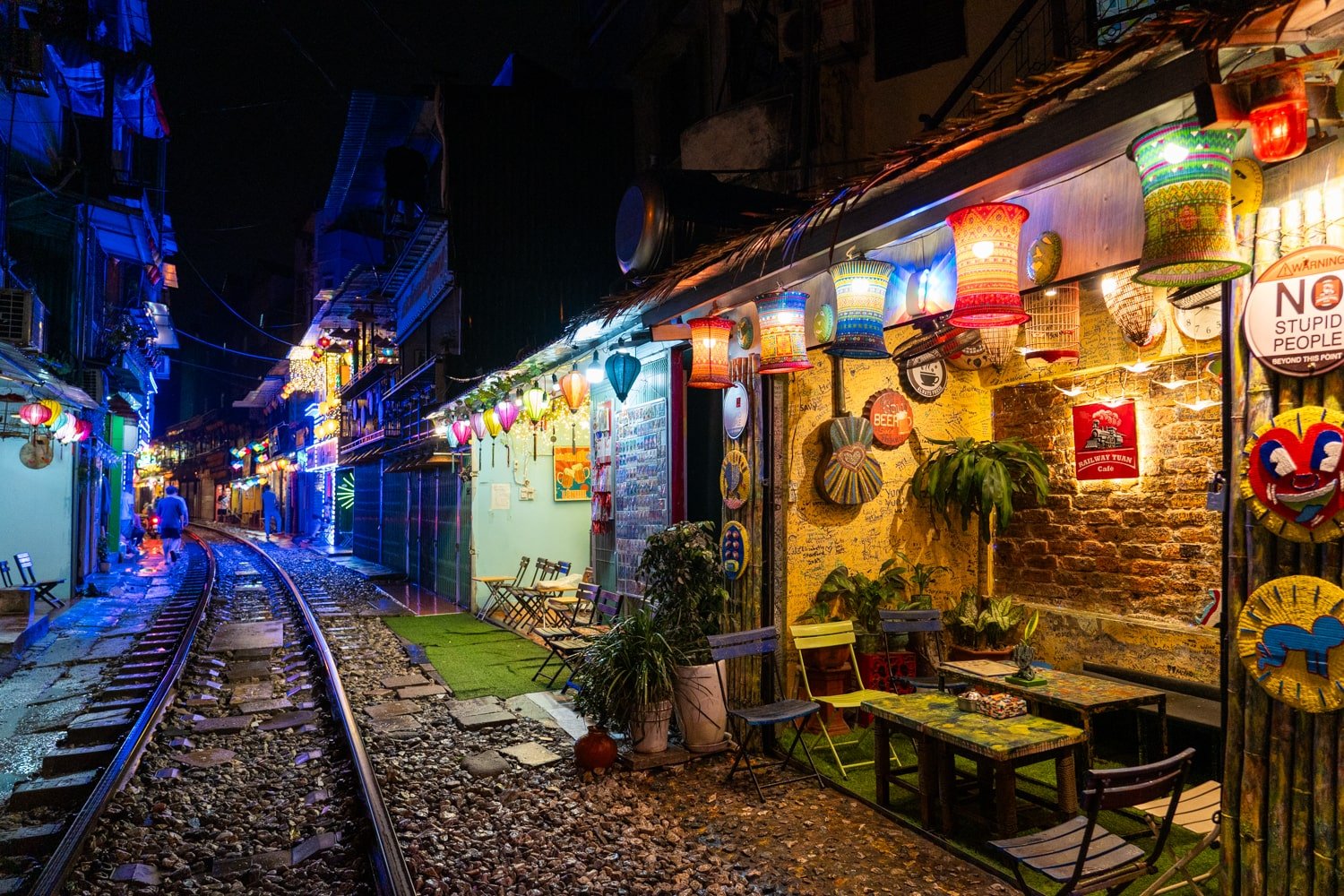
Hanoi Train Street (rough) schedule:
- Morning – 9:15, 11:20, 11:45 am
- Afternoon – 3:20, 5:30, 6:00 pm
- Evening – 7:00, 7:45, 8:30, 9:15, 10:00, 11:00 pm
Note that there might be change variations between weekdays and weekends. Also, please monitor local restrictions and obey police and local authorities.
The first time we planned to see the train, based on what a website told us, it never ended up arriving even though we waited over one hour.
The second time (at night), we went later (around 9:20 pm), and the third time we saw the train was just by chance as we happened to be shopping along the street on a Monday morning (around 11:45 am).
Shops & Cafes on Train Street (& Best Area to See the Train Passing)
The best area to see the train arrive is really anywhere along the tracks, but for photos/videos in particular, far down the “bend” in the tracks will give you the best viewpoint.
The bend is also the busiest part of the tracks, but luckily, there is a cluster of cafes—some with 2nd floors— that will give you an even more remarkable vantage point.
Ga Dong Duong Cafe (where we went) is in a nice location and so is 28 Train Street.
Aside from vantage points varying between the cafes, they all offer the same menu/prices for food and drinks.
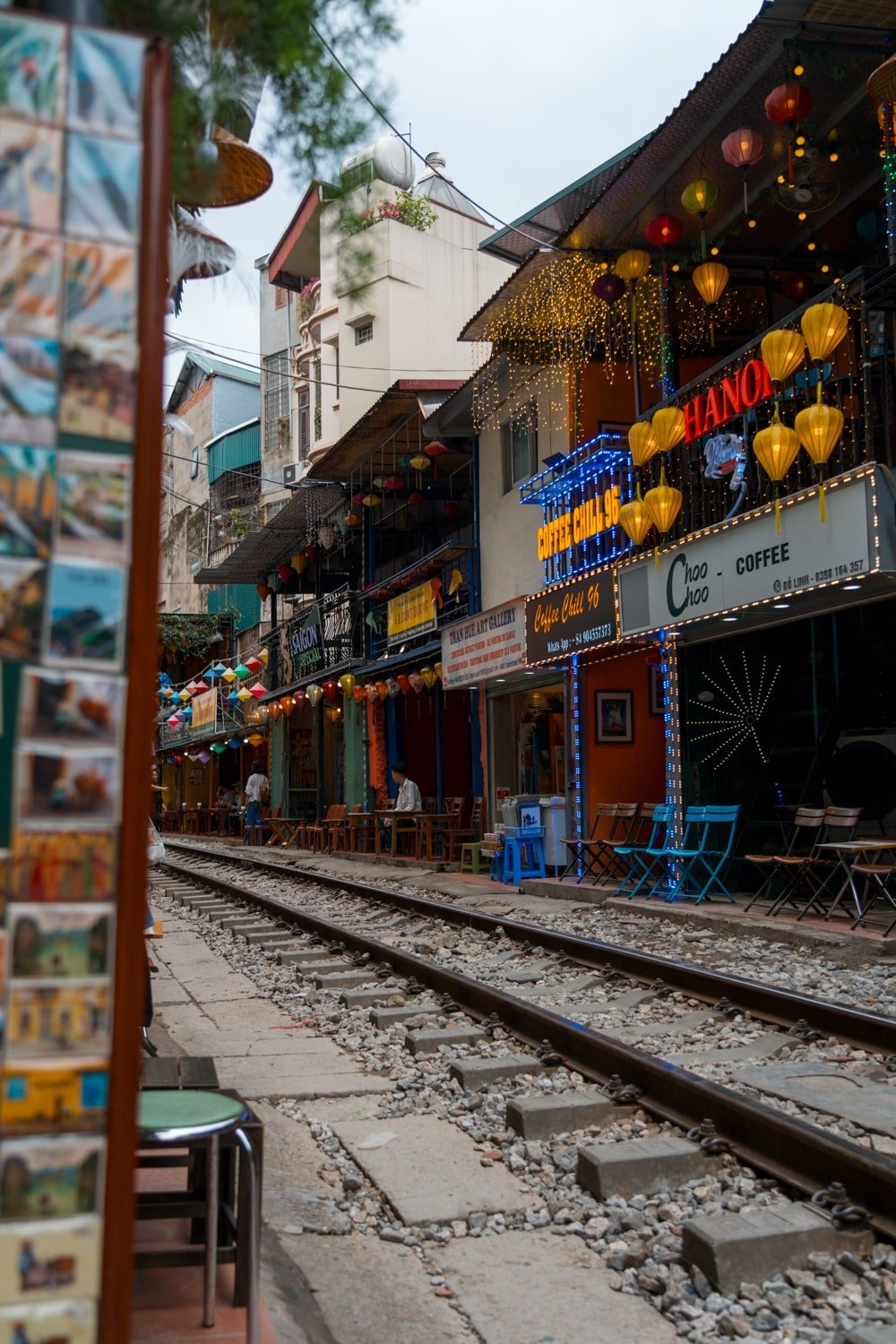
Is Visiting the Train Street a Responsible Thing to Do?
Reading about Fabienne’s first-hand experience, plus Bui Thi Loan’s account of Hanoi train street’s dark past, is quite discomforting, considering how unconscious tourists are [of its history] when visiting the street today.
So, with accidents, overtourism, and blatant ignorance of tourists, it begs the question: is visiting Hanoi’s Train Street a responsible thing to do?
Should you avoid following the crowd to the train street when in Hanoi? Is visiting really worth it?
Hanoi’s train street has become infamous for its fatal accidents, which have not only claimed lives and left dozens injured but also have had impactful consequences on the local’s livelihoods.
While Hanoi’s train street tourism has undoubtedly raked in a positive source of income for locals, it’s also exasperated the local community, posing safety concerns that forced officials to close the long-standing tracks in 2019.
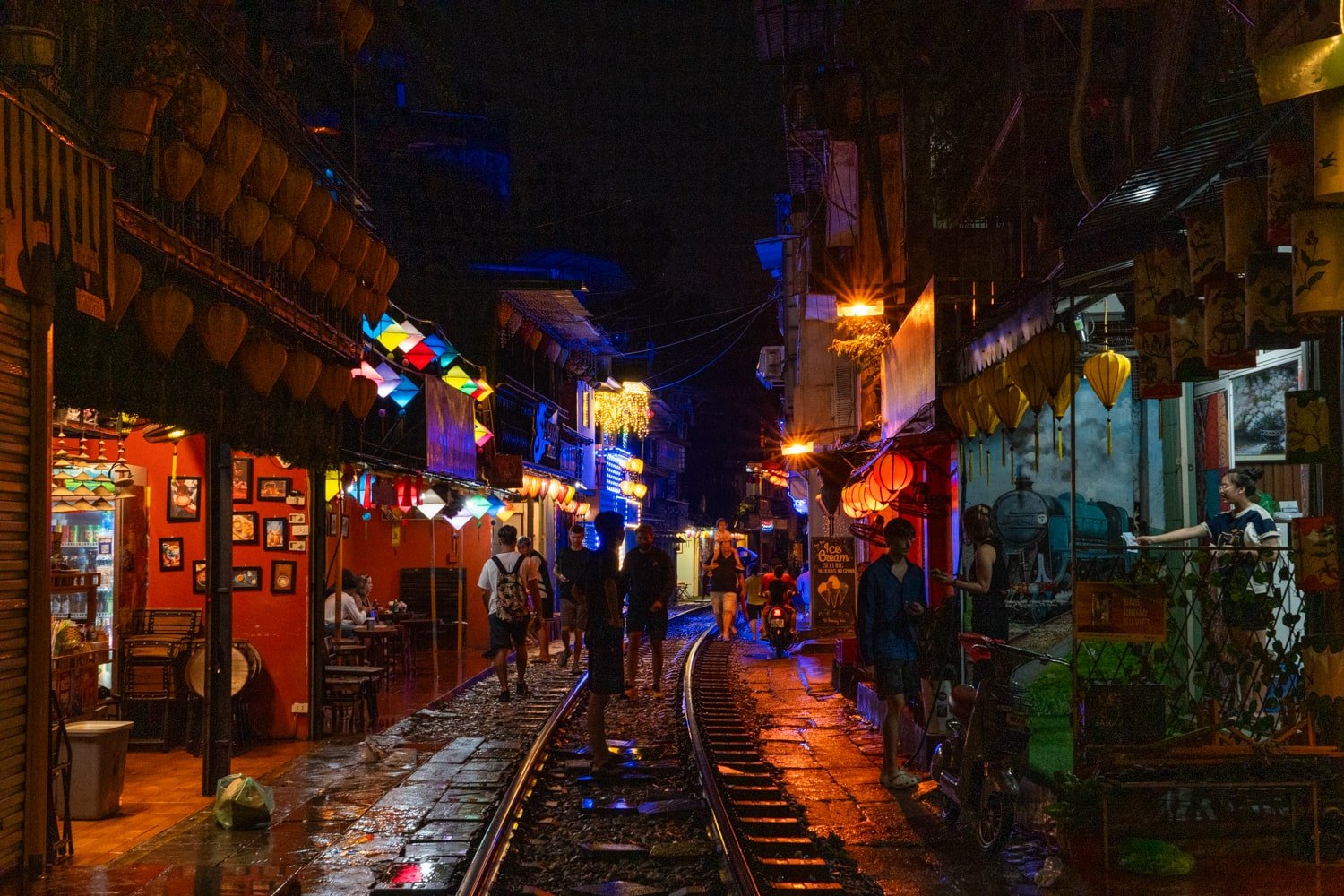
Even during closures, tourists and locals didn’t respect official regulations; tourists snuck onto the railway for photos, and local shop owners continued to operate as usual.
Since the train street’s reopening after years of shutdowns (partly due to COVID), local shop and cafe owners have mostly taken up the burden upon themselves to monitor the safety of tourists, in fear of tighter restrictions and future closures.
So if you’re asking me if it’s worth visiting—or even responsible to do so—it largely depends on you.
I went, but I’d have to agree with one of the train street’s cafe’s posters, which read something like, “Stupid people not allowed.”
Yes, if it’s still open, consider going and seeing it. Just leave the selfie sticks and folly at the hotel. Be respectful, get out of the way, and play nicely.
How Not to Feel “Scammed” on Train Street
Today, when you walk down Hanoi’s “famous” train street, you can’t help but feel like a walking dollar bill. What used to be a hidden and once-unfavorable stretch of the city is now the city’s main draw—a showy Christmas play that repeats 365 days a year, if you will.
Indeed, in place of humble homes and generations of families, the train street is now lined with cafes draped in flashing lights—best viewed at night.
It seems the brighter and more outlandishly decorated, the better. There are over 30 cafes to choose from, all vying for your dollars.
But, do you actually get to choose?
Not unless you play the game.
And the catch? While there is no entry fee to access Hanoi’s train street, the price is technically a coffee. Or a beer, whichever you prefer.
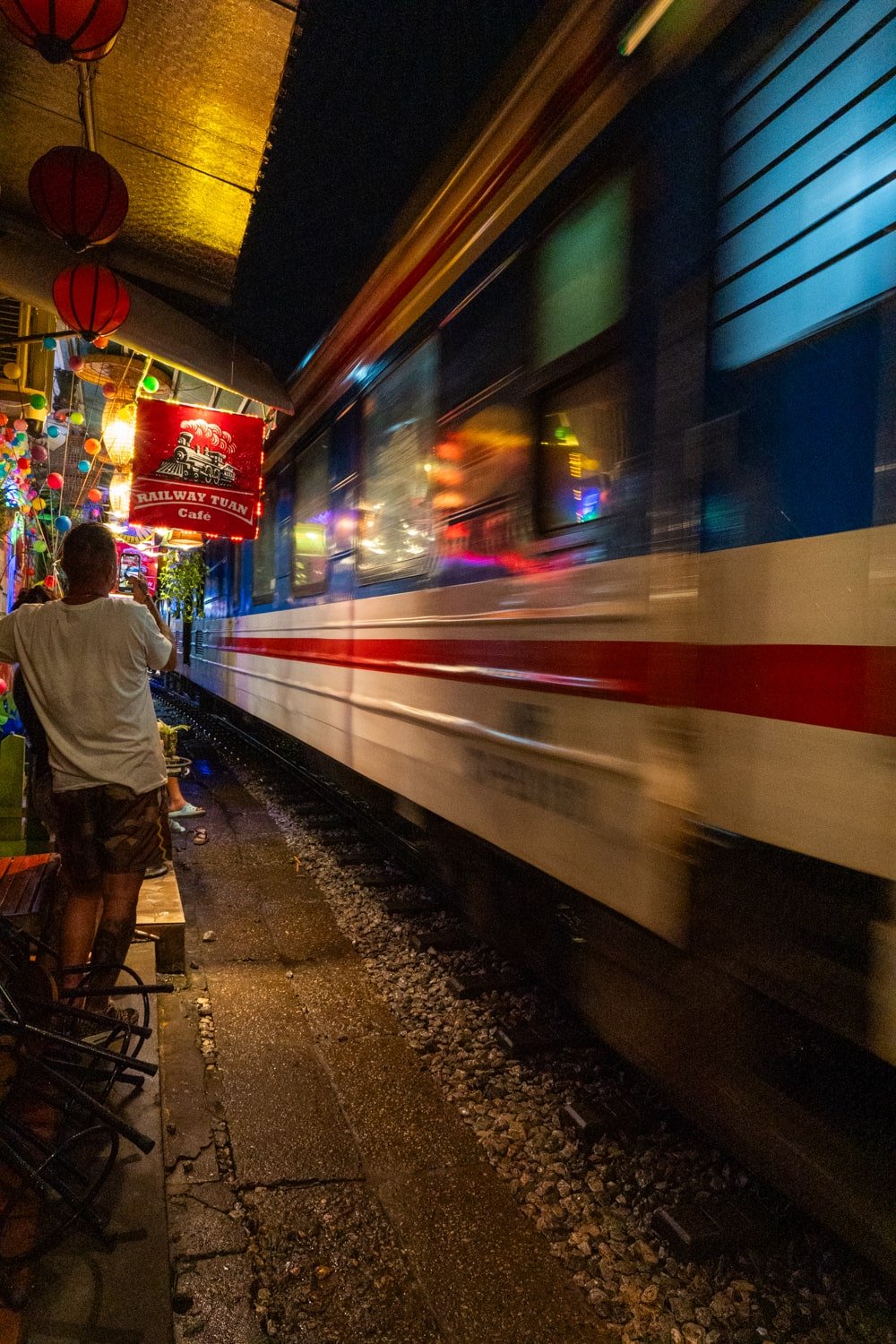
You will be asked if you want to see the train as soon as you get near the tracks (even a block away).
If you say yes, you’ll be brought by a local to “their” cafe along the tracks—even if the train isn’t scheduled to pass until hours later. (And they know because they have the daily schedule!)
You’ll be denied entry if you try to enter the train street by any area other than directly from the road intersection—for example, up the sidewalk steps along Phung Hung Road—unless you sit down for a coffee first.
Sure, this is partly to regulate how tourists access the street so they don’t get flattened by a 40-mph speeding train. But look closely; you’ll see that this “regulation” primarily regulates cash flow.
Unless you follow the local and immediately sit down to purchase drinks or food, you aren’t allowed to walk down the tracks to then find a cafe to sit in.
“Sit and spend first; take a selfie later” seems to be Hanoi’s Train Street tagline.
This experience for the unwary traveler can feel a bit… scammy.
As I was standing on the sidelines observing the scene unfold, I couldn’t help but think of a little mafia organization. Within five minutes, tourists came and went, getting denied entry and nearly yelled at for not wanting to sit where the cafe owner aggressively asked them to sit.
So, if you don’t want to feel like you’re getting scammed, know that you’re actually not getting scammed; it’s just how business works on the railroad tracks, and it is community-controlled.
Be aware and mindful if you still decide to visit Hanoi Train Street.
- Don’t try to sneak past the barricades.
- Don’t obnoxiously take selfies in the middle of the tracks.
- And listen to the locals when they tell you to get back!
If you go knowing that you’ll be asked (read, required) to purchase a drink in someone’s cafe, then you’ll enjoy the experience much more.
Alternatively, you can check out tours that include the Hanoi train street, so you know exactly when to go for the train times and won’t get caught up in any icky-feeling situation.
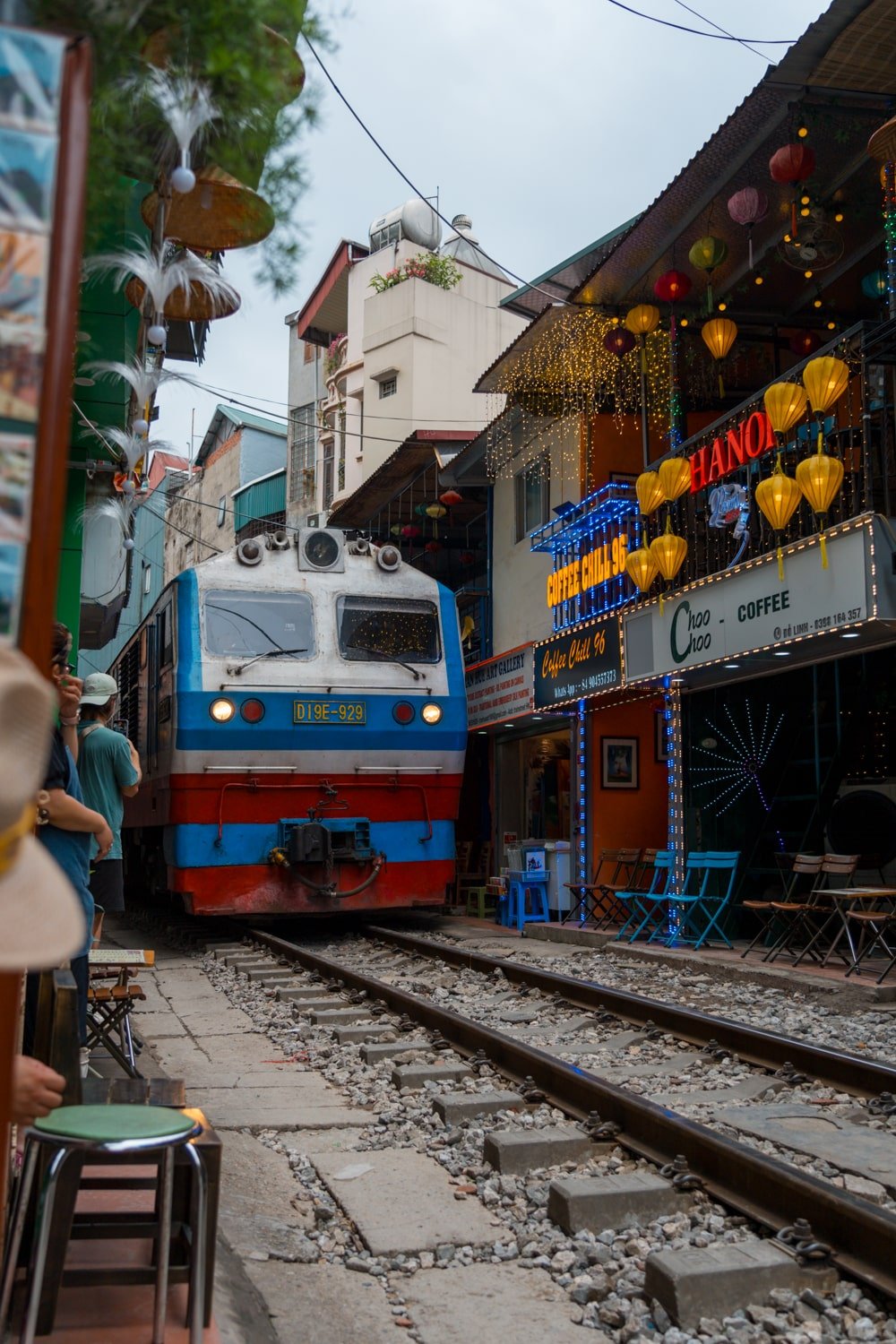
Train Street Day VS Night
One workaround for visiting Hanoi’s train street is to go during the day when more shops are open and the locals are going about their business.
At night, the railroad and cafes become overly crowded, with tourists waiting to capture the train arriving on their phones.
Shops close down in the evening as well. So if shopping is what you came for, go during the day! We found adorable handmade yarn keychains and dolls near the street entrance, but there were all sorts of souvenirs to pick up.
Visiting the train street is one of Hanoi’s top touristy things to do, but there’s so much more to discover in Hanoi, so I urge you to side-step the train tracks in favor of other experiences.
I loved our Hanoi food tour around the Old Quarter (away from the train tracks!). Our Ninh Binh day trip was also a highlight!


Hanoi Train Street: Instagram VS Reality — Is It Worth It?
One minute, tourists are relaxing with a beer in hand, laughing with their peers as seen on a postcard-perfect scene, and the next, scrambling to stand behind a “safety line” while their stools and chairs are heaved out of the way and everything is shooed off the tracks in a flurry.
Hanoi’s train street, as seen online, certainly evokes a particular wanderlust sensation of, “Wow, I gotta do that!” but is it actually as cool as it appears?
In short–yes and no. 🙈
As I mentioned above, the train street is not what it used to be. Today, it is a victim of overtourism and social media greed, and the place, in my opinion, feels a little inauthentic due to it.
On the other hand, it is slightly exhilarating, visually speaking, to see a train arrive on a whimsical cafe-and-shop-lined street with barely a foot of space to spare on either side.
It isn’t your everyday image, and it is—not so strangely—very characteristic of Hanoi: cute but chaotic at the same time.



